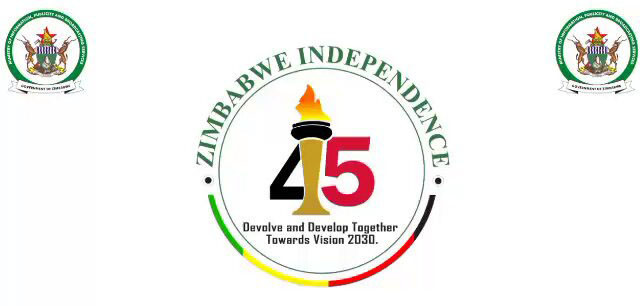
IN the ideal world of corporate governance, the distinction between the role of the board of directors and that of management should be unmistakably clear.
Boards are expected to govern — set strategy, oversee performance, manage risk, and ensure accountability — while management is expected to execute — run the organisation, make operational decisions, and deliver results. Yet, in practice, this division of labour is often not as clean-cut. What should be a productive relationship marked by mutual respect and complementary roles can quickly become contentious when boundaries are crossed.
Increasingly, organisations are witnessing tensions where boards encroach into operational matters and management pushes back, accusing directors of micromanagement. Conversely, there are also instances where executives undermine the board’s oversight by selectively sharing information or seeking to neutralise governance scrutiny.
This encroachment into each other’s domain can create serious friction and threaten the effectiveness of both governance and operational leadership.
Who does what?
The governance-management divide is a fundamental principle in modern organisational leadership. Boards exist to represent shareholders and stakeholders, provide strategic direction, approve key policies, oversee major risks, and evaluate the performance of the CEO.
Their role is not to manage day-to-day affairs, but to ensure that the organisation is well-managed. Management, led by the CEO and the executive team, is tasked with implementing the board-approved strategy, leading staff, allocating resources, and ensuring operational efficiency.
This arrangement is designed to provide accountability. However, without a shared understanding of these roles, and a willingness to respect them, conflict becomes almost inevitable. While the theoretical boundaries appear straightforward, the practice often becomes murky.
- Gwanda residents apprehend robbers
- Police sweat over missing student
- Zim gets Little Mister, Miss Universe licence
- Chinotimba lives another day
Keep Reading
Common forms of role encroachment
One of the most frequent issues in organisations, particularly in boards that are either too dominant or too disengaged, is role encroachment.
When board members begin to involve themselves in operational issues, dictate operational policies, or bypass the CEO to give instructions directly to staff, they shift from governance into management territory.
This not only undermines executive authority, but also creates confusion and fear among employees who are uncertain about reporting lines and decision-making protocols. On the other hand, management can encroach on the board’s space by resisting oversight and withholding full disclosure of risks.
Some executives even go as far as manipulating board decisions by filtering what gets presented or lobbying individual board members privately. In such cases, the board becomes less effective in its oversight role and is unable to fulfil its fiduciary duties. These breaches in role discipline erode the trust that must exist for effective governance to occur.
How often does this happen?
Empirical research supports the observation that role confusion between boards and management is not an isolated occurrence but a fairly widespread governance problem. A 2018 survey revealed that more than half, specifically 53%, of surveyed executives believed their boards had, at some point, overstepped their role and interfered in management’s domain.
These executives felt that directors became too involved in matters such as internal operations and personnel decisions, often without a full appreciation of the operational context.
Another survey in 2023 highlighted that 32% of board members themselves admitted they were unclear on where governance ends and management begins.
This lack of clarity among directors reflects the structural and cultural ambiguities that exist within many boards. In the non-profit sector, where board members often have deep personal attachments to the mission, the challenge is even more pronounced.
A survey on board practices in the non-profit sector found that found that 45% of non-profit CEOs reported that their boards frequently involved themselves in day-to-day management decisions, leading to friction and decreased morale within executive teams.
Consequences of scope confusion
When role boundaries are not respected, the organisational consequences can be significant. One of the immediate effects is a breakdown of trust between the board and the executive team. CEOs may begin to feel micromanaged, second-guessed, or disempowered, which reduces their ability to lead effectively. This, in turn, can lead to defensive behaviour, poor morale, or even resignation. Inversely, board members may feel they are not being given adequate information or that their strategic input is being ignored, leading them to become more intrusive in an attempt to assert their influence.
Over time, this dynamic can erode the board’s cohesion and effectiveness. Decision-making becomes slower and more politicised, as executives second-guess whether to act or wait for board direction. In extreme cases, the tension can lead to high-profile governance failures.
The 2022 Conference Board report noted that 25% of CEO departures among S&P 500 companies involved governance-management tensions, highlighting how role conflict can contribute to leadership instability.
A lack of respect for boundaries not only hurts internal dynamics but can also harm external perceptions, as stakeholders begin to question whether the organisation is being competently led and governed.
Root causes
The reasons for role confusion are manifold. One of the most common causes is the absence of clearly defined governance frameworks. Many organisations do not have a detailed board charter, and even fewer have a documented delegation of authority matrix that outlines what decisions belong to the board and which are reserved for management.
In such environments, role creep is easy to occur. Another reason is weak leadership at the top. When the chair of the board is not independent or assertive, and when the CEO does not engage in open dialogue with directors, a power vacuum can develop, prompting others to fill the gap.
Founder-led companies are especially prone to this, as the founder often holds both formal and informal power, making it difficult for the board to assert its governance role without conflict. Crises also trigger boundary violations.
In times of financial stress or reputational threat, boards often feel compelled to step into operational matters to restore stability.
While understandable, this approach often leads to longer-term dysfunction, as it blurs the accountability lines that must remain intact for effective leadership.
How to fix it
The path to resolving governance-management conflict begins with clarity. Organisations must invest in developing and continuously updating governance documents that define the respective responsibilities of the board and executive team.
This includes a robust board charter, a delegation of authority framework, and a clearly articulated CEO job description. However, documents alone are not enough.
Boards and executives need to be trained on governance principles and best practices. Capacity-building sessions can help both parties understand where their responsibilities start and end, and how to work together without encroaching on each other’s domain.
Just as important is cultivating a respectful and transparent culture. Boards and executives should meet regularly in both formal and informal settings to build trust. The relationship between the board chair and the CEO is especially critical — it must be professional, candid, and built on mutual respect.
Final thought
A certain degree of tension between the board and management is not only inevitable but necessary. Boards must be probing, skeptical, and unafraid to ask hard questions. Management must be responsive, transparent, and capable of delivering results.
However, this tension must be managed within a framework of defined roles and mutual respect. When boards try to manage and executives try to govern, both functions suffer — and the organisation bears the cost.
The goal is not to eliminate all friction, but to ensure it becomes a source of constructive accountability rather than a cause of dysfunction. As the field of corporate governance matures, boards and management must evolve from merely coexisting to truly collaborating — each doing their part, each respecting the boundaries that enable effective leadership.
- Nguwi is an occupational psychologist, data scientist, speaker and managing consultant at Industrial Psychology Consultants (Pvt) Ltd, a management and HR consulting firm. — Linkedin: Memory Nguwi, Mobile: 0772 356 361, [email protected] or visit ipcconsultants.com.











